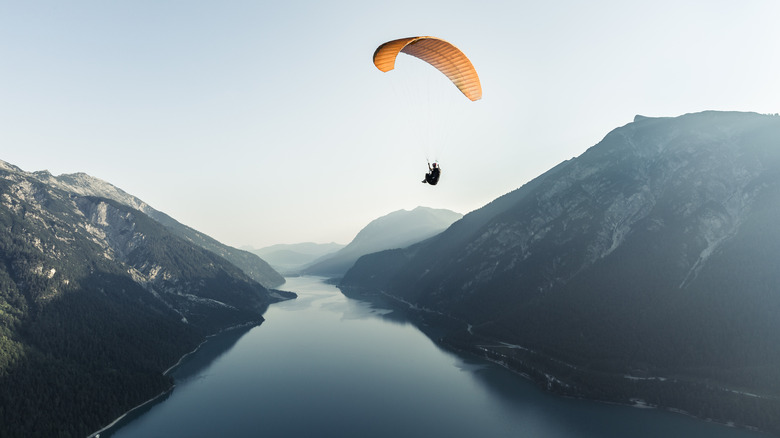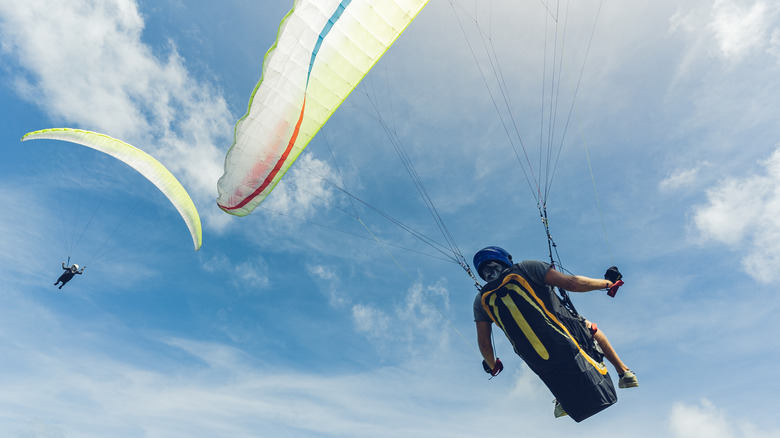What Is Paragliding & What It Takes To Get Started
Paragliding is one the most exhilarating outdoor sports that allows brave thrillseekers to experience what it's like to soar through the air like a bird. Whether you're flying over mountains, gliding above the seas, or adventuring over sand dunes, Unlike other forms of flight, paragliders rely solely on wind currents and their parachute-like canopy to glide effortlessly through the sky — no engine required. But what exactly is paragliding, and how can you get started?
Paragliding is an extreme air sport in which a pilot controls a lightweight, fabric canopy, known as a "wing," to achieve sustained flight. It has no rigid frame and is designed to be aerodynamic, creating lift as it catches wind. Suspension lines connect the wing to the pilot via a harness. The pilot sits comfortably in the harness and uses brake toggles and weight shifting to steer the glider. Unlike skydiving, a similar outdoor sport that costs a hefty penny, where the goal is to descend quickly, paragliding is all about staying airborne for as long as possible. This is why pilots launch from very elevated terrains like hills or mountains. In order to stay in the air, they take advantage of various wind patterns, including thermals (upward currents of warm air). This allows them to cover great distances, sometimes remaining aloft for hours on end.
If the thought of soaring through the skies excites you, you may be wondering what it takes to start paragliding. Here's what you need to know.
What you need to start paragliding
Paragliding isn't an activity you can dive into without formal training. To legally paraglide in most countries, you'll need a certification. Requirements differ depending on location, but in general, to earn this, you'll need to first enroll in a certified paragliding school to learn the fundamentals. Training typically includes:
- Ground School: This covers essential knowledge about equipment, weather patterns, aerodynamics, and flight theory. You'll also learn about safety precautions and how to handle emergencies.
- Tandem Flights: Your first time in the air will usually be on a tandem flight, where you're paired with an experienced instructor. This allows you to get a feel for paragliding — though you won't have full control.
- Solo Flights: After mastering the basics and logging a few tandem flights, you'll transition into solo flights under an instructor's guidance.
Once you've completed a certain number of solo flights and demonstrated proficiency, you'll earn your paragliding certificate, granting you the freedom to fly independently. At this point, you'll likely want to invest in your own paragliding equipment, including a paraglider wing, suspension ropes, harness, reserve parachute, variometer, and GPS.
Last, while paragliding is not overly strenuous, it does require a certain level of fitness. You'll need the strength to carry your gear up hills or mountains for take-off, and the stamina to endure long flights, which can sometimes last for hours. This also means that mental preparedness is crucial. Pilots must stay calm for long periods and in unexpected situations, when making quick decisions is crucial. Overall, starting the journey into paragliding may seem daunting, but with the right mindset, training, and equipment, the world opens up in a way you've never seen before.

